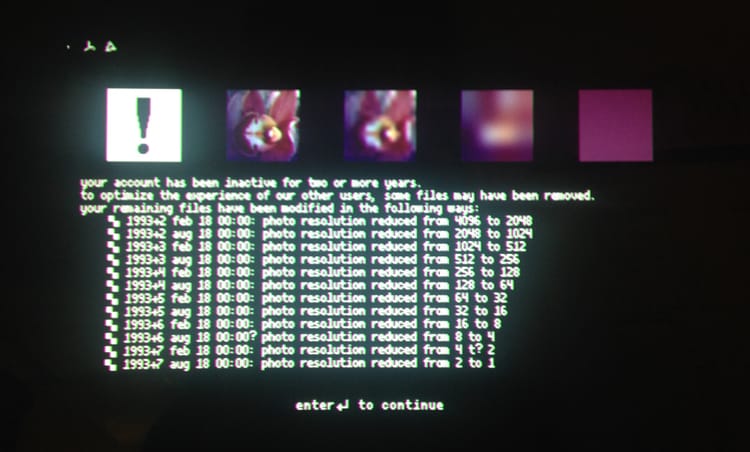Sougwen Chung: Co-creating with robots
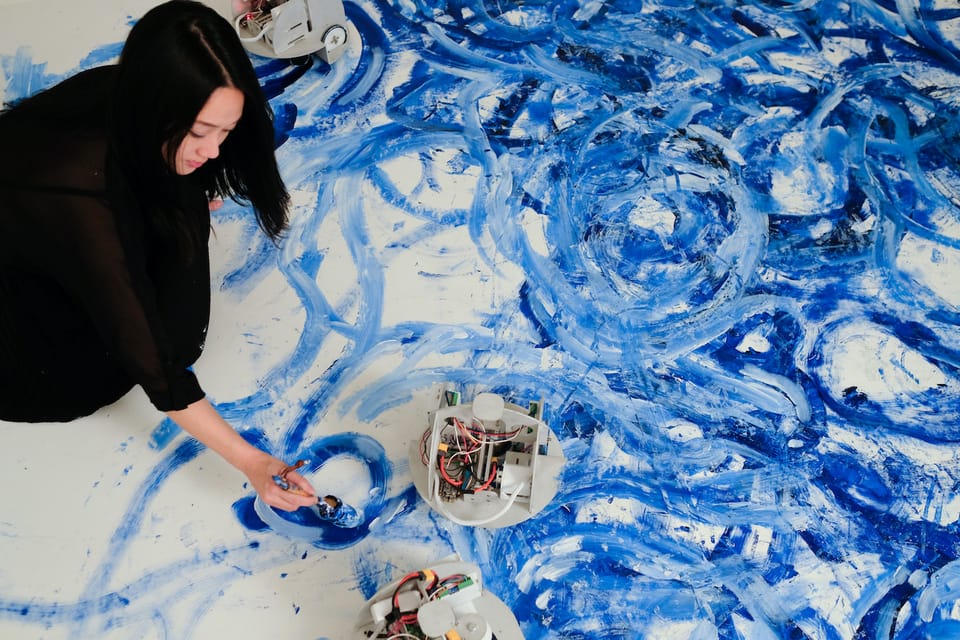
Sougwen Chung foregrounds human-machine collaboration in her research and multi-disciplinary art—combining performance, installation, AI training, and drawing-by-hand in such works as Drawing Operations Unit: Generation I (mimicry) and Omnia per Omnia.
As Monaco’s 2019 Woman of the Year, a former research fellow at MIT’s Media Lab, and a recipient of a Google artist’s residency, Chung has exhibited and performed her works in galleries and cultural centers around the globe.
We spoke with Sougwen about what collaborating with a robotic arm was like, the beauty intrinsic to both human and machine fallibility, and what auto-suggestions have to do with our sense of agency.
“If you wanted to have an existence on screen then, you had to engineer everything yourself.”
I wanted to ask first about your background in both art and in coding.
My father is an opera singer and my mother a computer programmer, so I started off pretty young. I was a violinist. And I think I coded my first website when I was nine. That was my introduction into the world of art and tech, pre-social media. If you wanted to have an existence on screen then, you had to engineer everything yourself.
I am a self-taught programmer and designer—as well as a formally trained musician from a young age. I gravitated towards early internet culture and software tools. I went to interactive art school Sweden, worked in several creative studios, and always engaged in music culture. Eventually I found my way into MIT Media Lab. Really, it’s been a fairly organic journey, but it started off with the web and violin.
When did robotics enter the picture?
I started working with robotics when I was a researcher at the Media Lab. I was drawn to gestural interfaces. Prior to my time in the Lab, I was creating installation work using projection and interactive coding, thinking about drawing and embodiment.
In my installation practice, I had been feeling like there was a division in the process of performance and programming visuals that felt alienating. I knew I wanted to evolve beyond that separation… so I began to experiment.
I only knew I wanted to connect the two a little bit more. Particularly inspired by the research being done at Fluid Interfaces, it stimulated my thinking about what computation could be. I began to think about the potential for robotic as kinetic sculpture and the personalities we ascribed to robots, that anthropomorphisation, seemed to resonate too. The early explorations, and really all of the work, is largely driven by curiosity and instinct. Its probably a peculiar way of approaching an engineering problem, but I’ve come to embrace it over the years. It’s the messy beginning of how I got interested in these systems.
When you were coming into your own as an artist and a coder, were there conversations taking place across those disciplines or were you treading un-navigated territory?
Actually, I was really struck by how a lot of our thinking about machines was communicated in media, in that they were really separate from the human element. And I just saw the potential to do something a little bit different. That’s sort of where the origins of this idea of collaboration really sparked my interest. You know, we’re used to seeing robots and machines on an assembly line and that image speaks to control in automation, which is what we’re really accustomed to.
I just saw the possibility for something different, something more about co-creation and working side-by-side. I didn’t really see anything like that out there and just got interested in seeing what that could mean for my practice.
Actually, I was struck by how our thinking about machines was influenced by media narratives and how divided they were from the human element of creativity. I just saw the potential to do something a little bit different. Robots are often contextualized in the frame of control and automation; most of our images of robots are located in factories on an assembly line.
I was interested in a new way of seeing a familiar object and genuinely excited by the possibility of something different… an image of human and machine interaction that spoke more to co-creation and working side-by-side.
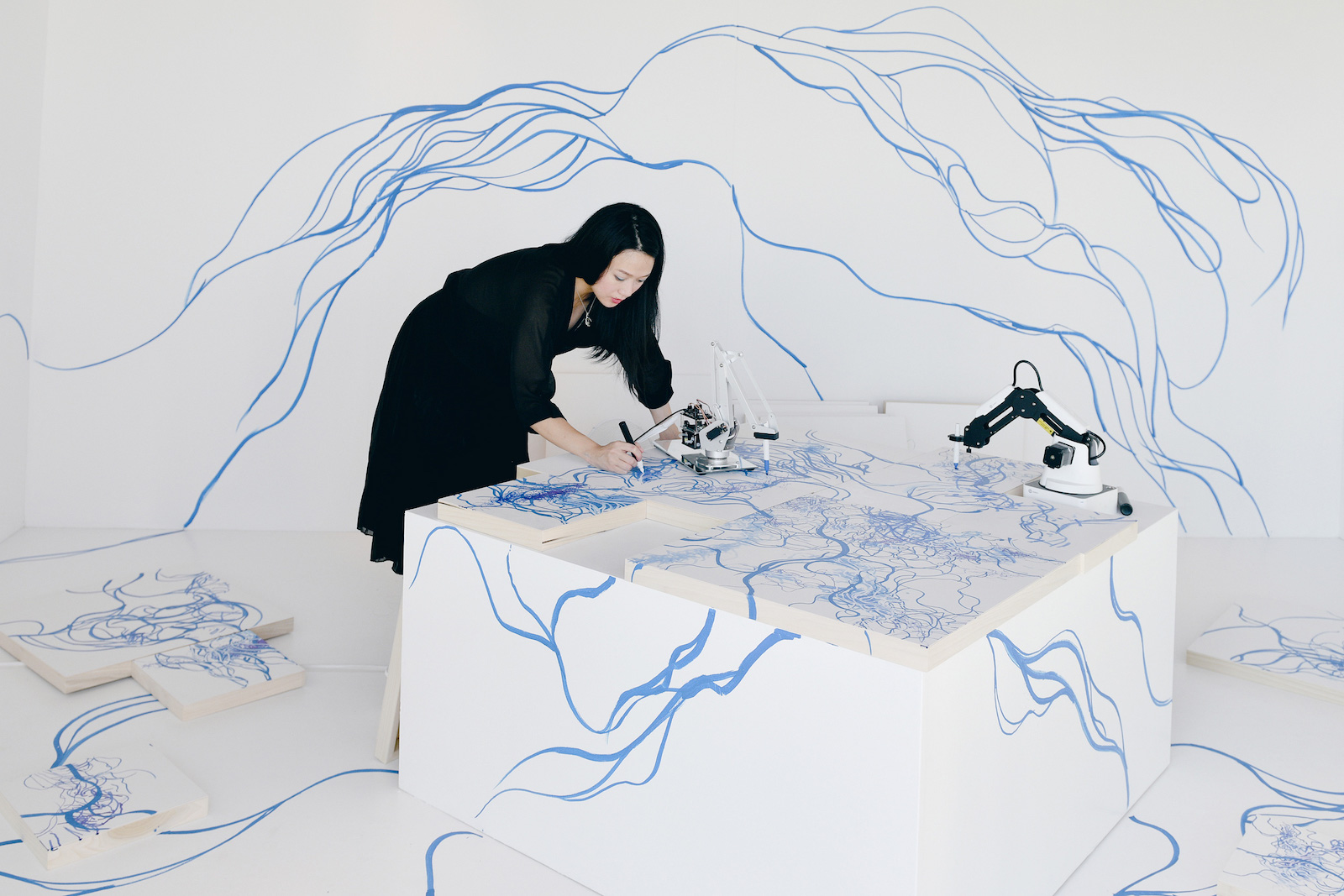
At the time, those images weren’t prevalent in the public consciousness. I wanted them to exist and was curious about what pursuing that image and creating a real process of making alongside it could mean for my practice.
I wanted to ask about Drawing Operations Unit: Generation_1 (mimicry) or D.O.U.G._1. Where did the idea come from and how did you go about executing it?
Drawing Operations Unit: Generation 1 was a response to seeing a lack of dynamic imagery involving robots and human beings. I was interested in what I could do in that space.
When we prototyped D.O.U.G._1, the generation’s focus was on mimicry. Sort of like follow-the-leader between man and machine, using a really simple patch in Max/MSP, and an open-source robotic arm design. Then it was just about seeing what would happen.
In 2015, I performed with the unit in Chelsea. It was such a departure from the previous work; I don’t think anyone knew what I was doing at the time. I certaintly didn’t. Prior to D.O.U.G._1, my art was highly organic, pristine and immersive, using sound and projection and different types of sensors to catalyze light and music in an installation environment. With this new project, I’d shifted into sitting on a table and drawing with a robotic arm in relative darkness, with no music and only one light. I think maybe people thought I was going crazy.
When I look back, I realize I wasn’t thinking too much about whether it would make sense given my previous body of work. Drawing Operations came from this desire to know how it felt like to make something with a robotic unit and show that process of making to an audience. To this day it still feels very honest, a bit crude, and very real.
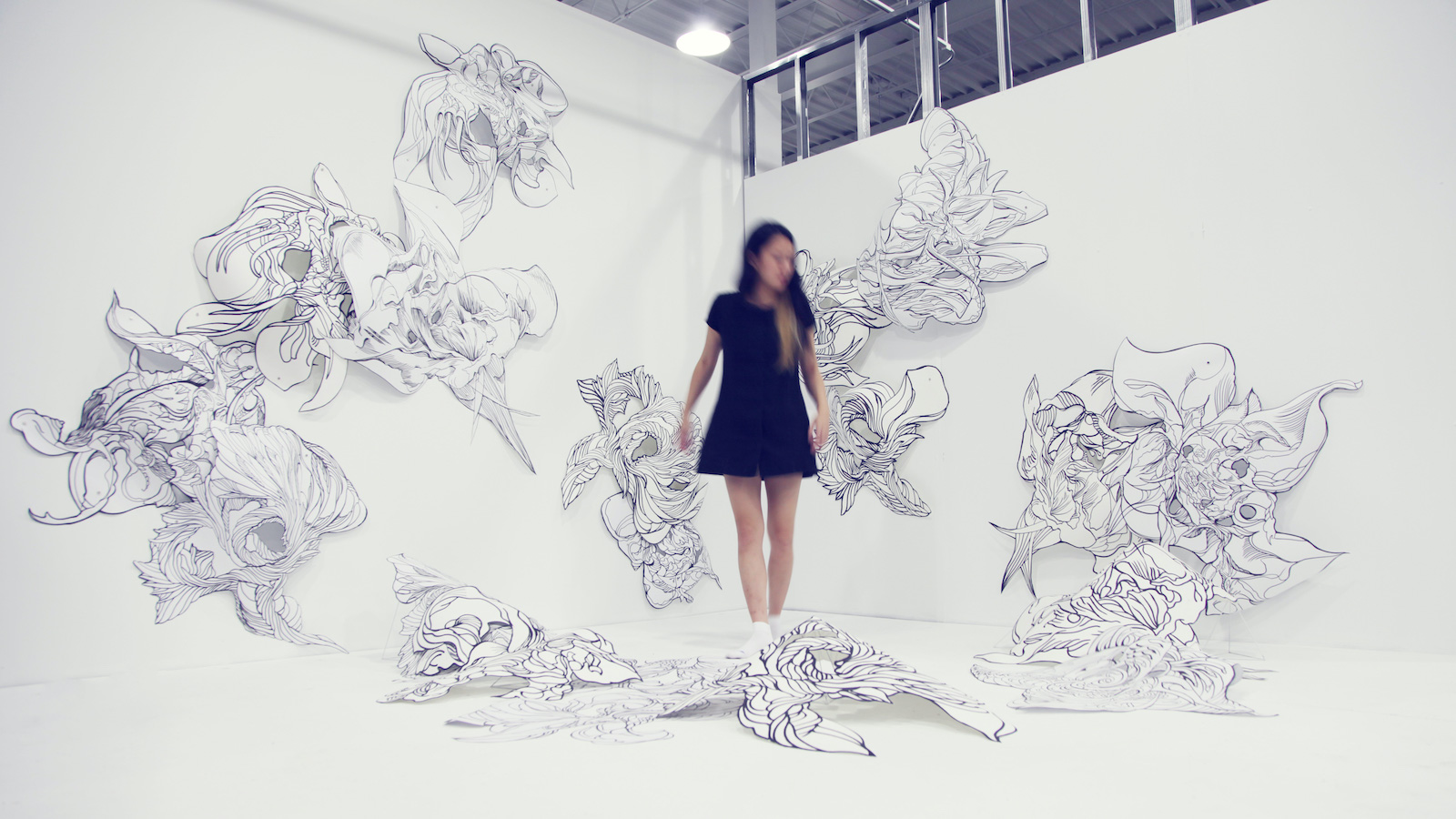
Could you go over the technical processes behind D.O.U.G._1, D.O.U.G._2, and the future generations of D.O.U.G.?
D.O.U.G._1 was the mimicry generation. We used a simple overhead web camera connected to just a laptop hidden behind the stage. The system runs on a Max/MSP patch called Jitter, which tracks a red marker on the end of my pen from positional data is logged. The coordinates are then fed back into the robot. There’s a little bit of latency, but close enough to feel close to real-time. I learned that the limitations of the robotic arm itself created a more compelling, unexpected performance. I used to say that the glitches, the bugs, weren’t bugs they were features, but it feels cheesy to say that now for some reason. In its simplicity, I think there is a kind of vitality to the performance.
The arm I was performing with was very much a prototype, especially when I started. It would falter and move in strange ways. The materiality of working with robotics was so new to me and made me realize that that which exists in simulation, in the software, could deviate wildly once translated to the physical world. It was fallible. And that fallibility became an element I could react and respond to. The drawing inter-operation with the robotic unit became this creative catalyst for my drawing, forcing me to adapt to what was emerging on the page.
Generation II came about while AlphaGo was getting a lot of press. Alphago was a system developed by DeepMind to play an ancient chinese board game called GO. The system, in a much publicised match, beat the top player of Go, Lee Sedol, in five historic matches several years ago. When I read about this match, I was struck by Lee Sedol describing his loss poetically, with appreciation for the beauty of the non-human move. It revealed to him a different way of playing the game.
I was inspired to exploring this idea for myself, and what working with an AI-powered robot could be for my art practice. How would drawing with a system trained on my own drawing style feel?
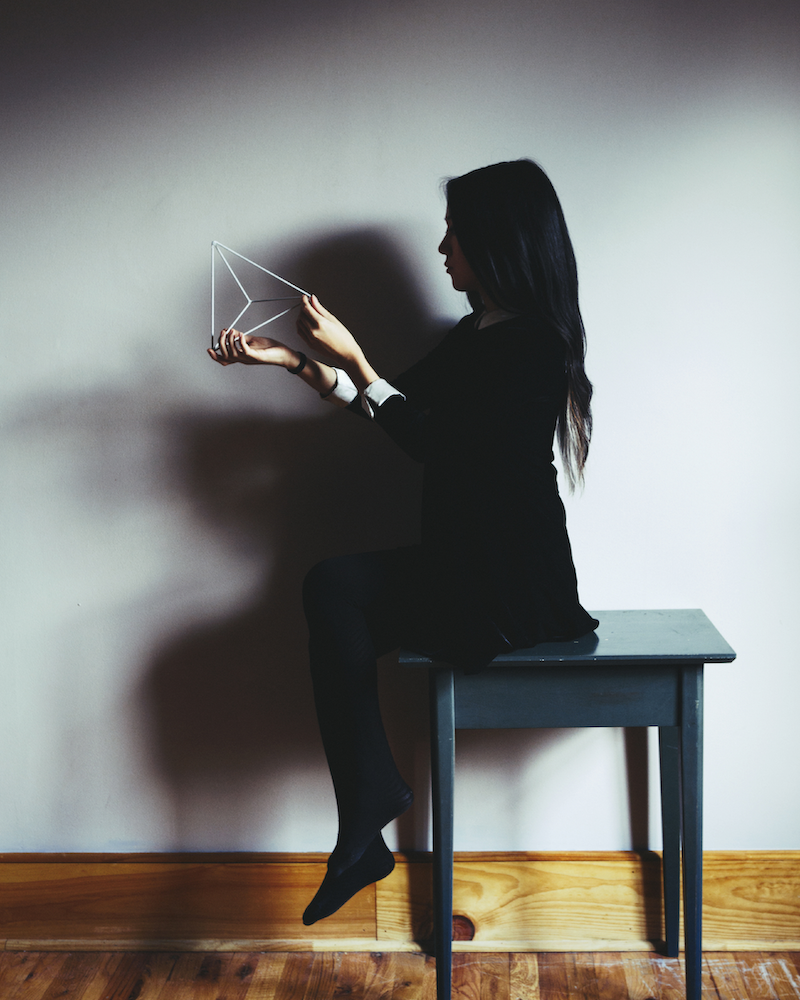

Where do you locate autonomy in your work, either for you as a performer or for your robots as performers?
That’s an interesting question. I don’t think so much about autonomy when performing. It’s very much about responding to the marks being made in space. It’s about collaboration and the act of co-creation.
Beyond the human-machine dynamic, collaboration is a universal idea. Collaboration, at its heart, isn’t about control. You could argue that the best collaborations are derived from balance and the recognition that authorship, even between humans, is complicated. This is particularly true in Generation II, because the model which drives the drawing style of the robotic unit is trained on my own work. That sort of becomes a machine-mediated agency, you could say.
In the third generation of the project, Omnia per Omnia, I explore collaboration with a multi-robotic system connected to the flow of the city. It suggests a plurality of movement, as the drivers of robotic unit’s drawn lines aren’t linked to a single person but rather the collective positions of a crowd in an environment. It’s a kind of social sculpture in a way, a new creative process that I learn through, which also functions as a site of speculation.
I noticed during performances of the “Drawing Operations” you demonstrate this intimacy with your machines that feels distinctly human. I was wondering, how would you characterize your own relationship to your machines when you perform with them?
It’s been characterized a lot for me, which I find funny. I’ve heard “Mother of Robots” thrown around, which is probably not what I would use for myself as I’ve always described the robotic units as collaborators. Maybe kin, on some level, a la Donna Haraway, could be a bit closer. But children, probably not. I mean, if that were the case, I would have twenty-six robot children, which is far too many. Think of the electricity bill!
More seriously, however, I’m open to all characterizations of the project. For myself, I’ve come to think about projects as a process of thinking about and shaping conversations on human and non-human relationships. And that’s enough for me.
“Beyond the human-machine dynamic, collaboration is a universal idea.”
Its derived from engaging in the practice of art-making as a microcosms for thinking about the dynamics of humans and systems. On a subliminal level, I’m probably drawn to projects like Drawing Operations and Omnia because they help me work through ideas about control and authorship in the safe space that drawing provides for me.
I also think it’s worth extending such consideration to our authorship and agency within some of these larger systems that may not be strictly designed for the purpose of art-making, such as social media platforms. Our interaction with some of these software tools that sarcastic air quote “help us create” in certain ways. There are ways in which our interactions with these systems cause a relinquishment of authorship. I was always skeptical of that and kind of continue to be so. Hopefully this project creates some dialogue around where our agency begins and the software ends.
I was struck by some of the questions that you pose on your website, a couple of them being, “what does it mean to collaborate with the spaces we inhabit, the tools we build?” and, “where does I end and we begin?” How do you perceive authorship in your work and in a piece like Omnia? Where does I end and we begin, for you?
The more I work with these systems, the more porous I realize these categories of I and we actually are. In the work, I deliberately use and have used the same color paint as the robotic units as a means of interrogating the origins of the markings and the exploring the question of who made what.
For Omnia in particular, I became interested in this idea of collective authorship. The I in the work is complicated: I am responding in a site specific space to the movement of a multi-robotic system linked to the movement of crowds captured by public cameras in New York City. The flow of the city, as depicted through an optical flow algorithm, becomes a collective I. I translating that flow into physical space as paths being drawn by the multi-robotic system, which I then collaborate with through my own drawing movement. It’s an exploration of the vision of human, machine, and the city. The performance shows the feedback loop, the performance artifacts become a swathe of organic blue lines. It collapses the distinctions between human, machine, and the city, as it traces the process of intra-action between the three on canvas.


Framed in another way, where do my thoughts end and ours begin? In part, the projects responds to the observation that ideas themselves are becoming increasingly less attributable. I’m curious about the origin of ideas—and what the fragmentation of those origins can mean for our own creative processes and our notion of whats true and whats not. There’s an ambiguity about what is true, and how we establish our ideas about things, that can be read as both fresh and interesting or dark and despairing. Its probably both. Both interpretations can be equally true. I think I’m drawn to that complicated, philosophical space.
It’s an idea amplified by the construct—the feedback loop—of human and machine. The subliminality of the auto-correct complicates authorship, but it’s so ubiquitous that its influence has become invisible. I believe it is something we should pay attention to: our thinking and our authorship, as modulated by those recommendations, becomes fascinating for me.
I’m frequently daydreaming about these questions and creating work that I think might help me expand my thinking about them. Over the years, it’s become part of creating a shared space for dialogue about the systems that I—and we—use every day.

Credits
Interview conducted by Pao Yumol in November 2019. Edited and condensed for clarity.

